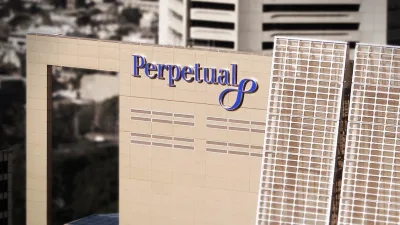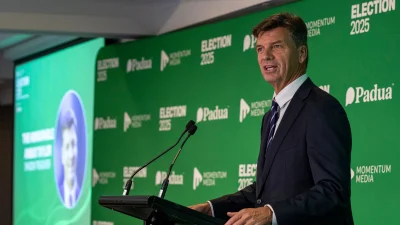Aussie fund managers underestimating challenges in ETF launches



Commentators have said Australian fund managers are lacking in-depth knowledge compared with overseas peers when it comes to expanding their range with ETFs and underestimating the competition from passive strategies.
ETF assets under management have passed $255 billion in Australia, and EY has forecast it could reach US$25 trillion ($39.6 trillion) globally by 2030. This has led mid-tier asset managers to consider the space as a way to boost their profits and expand their reach.
Most recently, First Sentier Investors became the latest manager to launch an active ETF with the First Sentier Geared Australian Share Fund Complex ETF (LEVR) listing on the ASX. The firm described it as a way to expand its offering to investors who may not have considered investing in a managed fund and flagged further launches on the horizon.
But law firm K&L Gates said while it might seem like an easy option to boost profits and inflows, the firm has found some Australian fund managers have less knowledge about the structure than overseas counterparts and how it operates in reality compared to managed products.
Matthew Watts, partner in asset management and investment funds at K&L Gates, said to Money Management: “They [local fund managers] just know that ETFs are these growth products in the financial services industry, but without really having much in-depth knowledge of what an ETF is, and having to skill up quickly or hire people in to do that.”
Research by Stockspot found most active fund managers who launch ETFs by repackaging existing strategies into new ETF wrappers often struggle to attract money. There are 50 ETF providers on the ASX, but 24 of those manage less than $100 million each, it found.
Active managers who have found success with ETF products include Magellan, Russell Investments and Hyperion, but there is a tendency for investors to question why they would pay for an active fund when they can get a similar passive fund more cheaply.
For example, First Sentier’s fund costs 0.95 per cent per annum compared to 0.35 per cent per annum offered on the similar VanEck Geared Australian Equal Weight Complex ETF.
Chris Brycki, founder of Stockspot, said: “The track record of active ETF launches in Australia isn’t great. Many struggle to reach critical mass. Some get delisted quietly after failing to attract enough interest. Others survive on life support, with minimal assets under management.
“Active managers entering the ETF space need to realise that they’re not just launching a new product. They’re entering a new ecosystem. One where performance is ruthlessly measured and price competition is fierce.
“While First Sentier’s new ETF may generate some interest, history suggests that active ETF success will remain the exception, not the rule.”
Marc Jocum, senior product and investment strategist at Global X, also cited cost as the largest barrier regarding the adoption of active ETFs.
“Wrapping an active strategy in an ETF doesn’t automatically make it cheaper. In Australia, most investor flows are heading towards low-cost ETFs, with two-thirds of flows going into products charging 0.25 per cent or less,” Jocum commented.
Overseas launches
On the other hand, Watts said overseas fund managers who are looking to enter Australia tend to already have the benefit of that background knowledge. In particular, ETFs in the US were launched in 1993, eight years earlier than in Australia, and net flows during 2024 sat at more than US$1.1 trillion ($1.7 trillion).
When looking to expand, Australia is the fourth-largest market in Asia and many overseas managers say they are using it as a gateway to access the wider Asia-Pacific region.
Data from PwC shows 42 per cent of its respondents anticipate “significant demand” for active ETFs in Asia-Pacific over the next two to three years, predominantly in equity vehicles and alternatives such as private markets, while Asia-Pacific was cited as a primary target for global issuers.
Their top routes for overseas firms entering another geographic region are partnering with a local financial institution (18 per cent), passporting European UCITs ETFs into a new region (18 per cent), or adding an ETF share class to a mutual fund (9 per cent).
Watts said: “What we’re seeing is that it is a lot easier for offshore managers, particularly the US managers, to enter the Australian market, because they’re familiar with ETFs and their market is a lot more mature.
“They do have that base level knowledge. While the structures are a little bit different, distribution might be different, they have base knowledge around what an ETF is.”
Tim West, UK ETF leader at EY, said: “Australia is an increasingly attractive market for global asset managers looking to launch ETFs in the Asia-Pacific region, with investments into Australian ETFs surging in recent years. Australia’s leadership in low-cost investments means its investors (both institutional and retail) are attracted to the ETF construct, with a lot of flow in Australia going to low-cost trackers.”
Watts’ colleague, Lisa Lautier, partner in asset management and investment funds at K&L Gates, added that overseas firms are entering Australia through the use of a domestic trustee, such as Equity Trustees or Perpetual. The use of a trustee allows the firm to focus on managing the ETFs and leave the distribution aspect to the trustee.
“We’ve spoken with a number of US managers about how they would launch a product in Australia. It is relatively easy if you work with one of the outsourced trustees in the market,” she said.
“From a regulatory perspective, it is very straightforward for a manager to come and partner with one of those outsource trustees to really get up and running.
“The difficult part is selling your strategy to the Australian market, and a US strategy may not necessarily translate to the Australian market because the markets are quite different, so some thought does need to go into the distribution strategy.”
Recommended for you
VanEck is to list two ETFs on the ASX next week, one investing in residential mortgage-backed securities and the other in Indian companies.
Perpetual outflows have risen by 134 per cent from the previous quarter as the result of client mergers and rebalancing including $2.5 billion in outflows at Pendal Asset Management.
ClearBridge Investments has expanded investor access to its global infrastructure investment strategies through the launch of three active ETFs on the ASX.
Boutique real estate credit manager COI Capital Management has appointed a former private equity head from MLC Asset Management.















